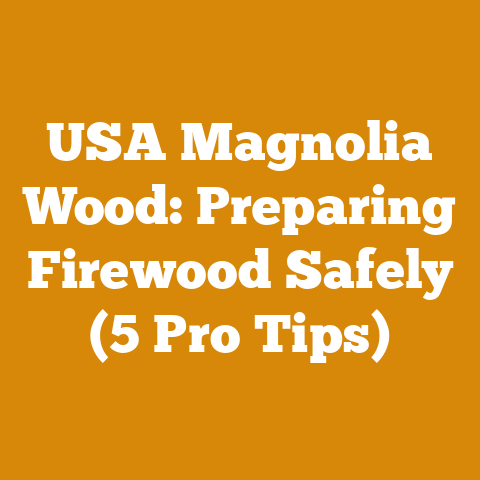How Much Does an Arborist Cost? (5 Pro Tips for Precise Quotes)
Okay, let’s dive into the world of arborists and tree care costs. Before we get started, let’s be honest, sometimes all we really want is a low-maintenance yard. A few well-placed shrubs, maybe some drought-resistant ground cover, and the dream of never having to hire anyone, right? But the reality is, trees are living things. They need care, sometimes they get sick, and occasionally, they become a hazard. That’s where arborists come in. And understanding their costs – and getting accurate quotes – is essential. So, let’s get to it.
How Much Does an Arborist Cost? (5 Pro Tips for Precise Quotes)
As someone who’s spent a good chunk of my life around trees – from felling timber in the Pacific Northwest to splitting firewood under the Tuscan sun – I know that dealing with trees requires expertise and, sometimes, professional help. I’ve learned the hard way that a DIY approach can quickly turn costly (and dangerous). And trust me, I’ve seen it all, from homeowners getting stuck halfway up a tree with a dull chainsaw to improperly pruned branches causing structural damage.
So, let’s talk about arborist costs. This isn’t just about getting the cheapest price; it’s about getting the right value for your money. It’s about ensuring the health and safety of your trees, and, in turn, the safety of your property and yourself.
1. Understanding the Factors Influencing Arborist Costs
First, let’s break down what goes into an arborist’s pricing. It’s rarely a simple, flat fee. Several factors come into play.
- Tree Size and Complexity: Obviously, a towering oak tree is going to cost more to trim or remove than a small ornamental maple. The larger the tree, the more time, equipment, and manpower are required. The complexity of the job also matters. Is the tree close to power lines? Is it leaning precariously over your house? These factors increase the risk and, therefore, the cost.
- Location, Location, Location: Just like real estate, location matters. Arborists in urban areas with higher operating costs (insurance, permits, etc.) tend to charge more than those in rural areas. Accessibility also plays a role. Can the arborist easily get their equipment to the tree? Or will they have to navigate narrow pathways or steep slopes?
- Type of Service: Pruning, tree removal, stump grinding, disease treatment – each service has a different price point. Pruning is generally less expensive than removal, while specialized treatments can vary widely depending on the product and application method.
- Experience and Credentials: A certified arborist with years of experience will likely charge more than someone just starting out. However, their expertise can save you money in the long run by preventing costly mistakes. Look for certifications from the International Society of Arboriculture (ISA).
- Equipment and Labor: Arborists invest heavily in specialized equipment like bucket trucks, chippers, and rigging gear. They also need a skilled crew to operate this equipment safely and efficiently. These costs are factored into their pricing.
- Travel Time: Some companies will charge for travel time if they have to travel a long distance to get to your property.
Data Point: According to recent industry reports, the average hourly rate for an arborist ranges from $75 to $250, depending on location and experience. However, this is just a starting point. Large or complex jobs can easily cost thousands of dollars.
2. Getting Multiple Quotes: A Must-Do
This is arguably the most crucial step. Don’t settle for the first quote you receive. Get at least three different estimates from reputable arborists in your area.
- Why is this important? It allows you to compare pricing, services offered, and the arborist’s approach to the job. You might find that one arborist recommends complete removal, while another suggests pruning and cabling to save the tree.
- How to do it effectively:
- Be specific: Clearly explain what you want done. “I want this tree trimmed” is not enough. “I want the deadwood removed and the crown thinned by 20%” is much better.
- Provide access: Make sure the arborist can easily access the tree to inspect it properly.
- Ask questions: Don’t be afraid to ask questions about their experience, qualifications, insurance coverage, and the methods they plan to use.
- Get it in writing: Always get a written quote that clearly outlines the scope of work, the price, and any additional fees.
Personal Story: I once hired an arborist to remove a large pine tree that was threatening my workshop. The first quote I received was outrageously high. I got two more quotes, and the final price I paid was almost half of the initial estimate. Lesson learned: never underestimate the power of comparison shopping.
3. Decoding the Quote: What to Look For
Once you have your quotes, it’s time to analyze them carefully. Don’t just focus on the bottom line.
- Scope of Work: Does the quote clearly describe what the arborist will do? Does it include details like stump grinding, debris removal, and site cleanup?
- Insurance: Make sure the arborist has adequate liability insurance and workers’ compensation coverage. Ask for proof of insurance. This protects you if someone gets injured or property is damaged during the job.
- Certifications: Check for ISA certifications. Certified arborists have demonstrated a certain level of knowledge and expertise.
- Payment Terms: Understand the payment schedule. Is a deposit required? When is the final payment due?
- Contingency Plans: What happens if they encounter unexpected problems, like hidden roots or underground utilities? Will there be additional charges?
Unique Insight: I always ask arborists about their approach to tree preservation. A good arborist will try to save a tree whenever possible, rather than automatically recommending removal. They should be able to explain the benefits of different pruning techniques and how they can improve the tree’s health and longevity.
4. Negotiating the Price: Tips and Strategies
While you shouldn’t try to lowball an arborist, there are legitimate ways to negotiate the price.
- Be upfront about your budget: If you have a limited budget, let the arborist know from the beginning. They may be able to suggest alternative solutions or prioritize certain tasks.
- Ask about discounts: Some arborists offer discounts for seniors, veterans, or repeat customers.
- Consider off-season work: Arborists are often less busy during the winter months, so you may be able to negotiate a lower price.
- Bundle services: If you need multiple trees trimmed or removed, ask for a bundled discount.
- Offer to handle debris removal: If you’re willing to take care of the cleanup yourself, you may be able to save some money.
Real-World Example: I once negotiated a lower price by offering to stack the firewood myself after a tree removal. It saved the arborist time and effort, and I got a pile of free firewood!
5. Avoiding Common Pitfalls: Red Flags to Watch Out For
Not all arborists are created equal. Be wary of these red flags:
- Lack of insurance: This is a non-negotiable. Never hire an arborist who doesn’t have adequate insurance coverage.
- Unsolicited offers: Be cautious of people who knock on your door offering tree services, especially after a storm. They may be unqualified or uninsured.
- Vague quotes: A quote that doesn’t clearly describe the scope of work is a red flag.
- Pressure tactics: Don’t be pressured into making a decision. Take your time to compare quotes and do your research.
- Unwillingness to provide references: A reputable arborist should be happy to provide references from satisfied customers.
- Asking for full payment upfront: A small deposit is reasonable, but never pay the full amount before the job is completed.
Case Study: I know a homeowner who hired an uninsured “arborist” who damaged their neighbor’s fence during a tree removal. The homeowner was held liable for the damages, which ended up costing them thousands of dollars. Don’t make the same mistake.
Bonus Tips for Optimizing Your Tree Care Budget
Beyond getting accurate quotes, here are some additional tips for managing your tree care costs:
- Preventative Maintenance: Regular pruning and maintenance can prevent small problems from becoming big, expensive ones. Think of it like preventative healthcare for your trees.
- Proper Watering and Fertilization: Healthy trees are less susceptible to disease and pests. Make sure your trees are getting the water and nutrients they need.
- Mulching: Mulch helps retain moisture, suppress weeds, and protect tree roots.
- Early Detection: Regularly inspect your trees for signs of disease or pests. Early detection can save you money on treatment.
- DIY (with caution): For small tasks like removing dead branches or pruning small shrubs, you may be able to do it yourself. However, be sure to follow safety precautions and use the proper tools.
The Arborist’s Perspective: A Conversation
To add another layer to this discussion, I spoke with Sarah Miller, a certified arborist with 15 years of experience in the field. Here’s a snippet of our conversation:
Me: Sarah, what’s the biggest misconception homeowners have about arborist costs?
Sarah: “I think a lot of people see tree work as just ‘cutting down trees,’ and they don’t understand the skill, equipment, and risk involved. They often focus solely on price without considering the quality of the work or the arborist’s qualifications.”
Me: What’s your advice for homeowners who are trying to get accurate quotes?
Sarah: “Be as specific as possible about what you want done. Provide clear photos and access to the tree. And don’t be afraid to ask questions. A good arborist will be happy to explain their process and answer any concerns you have.”
Me: What’s the one thing homeowners should always check before hiring an arborist?
Sarah: “Insurance! Always, always check for insurance. It’s the most important thing.”
Workflow Optimization in Wood Processing: A Personal Touch
Now, let’s bring this back to my own experiences in wood processing and firewood preparation. I’ve spent years refining my workflow to maximize efficiency and minimize waste. Here are a few key strategies I’ve learned:
- Log Handling Efficiency: Invest in good log handling tools, like cant hooks, log lifters, and skidding tongs. These tools can save your back and significantly speed up the process of moving and positioning logs.
- Chainsaw Maintenance: A well-maintained chainsaw is a safe and efficient chainsaw. Regularly sharpen the chain, clean the air filter, and check the oil levels. I have a dedicated chainsaw maintenance routine that I follow religiously. I use a chainsaw file for sharpening, and I clean the air filter after every use.
- Splitting Techniques: Learn proper splitting techniques to minimize effort and maximize yield. Use a splitting maul with good leverage and aim for the natural cracks in the wood. I also use a hydraulic log splitter for larger or tougher logs.
- Stacking for Optimal Airflow: Stack your firewood in a way that allows for good airflow. This will help it dry faster and prevent rot. I use a crisscross stacking method that creates air channels throughout the pile.
- Moisture Meter: Invest in a moisture meter to ensure your firewood is properly seasoned before burning it. The ideal moisture content for firewood is below 20%.
- Sustainable Timber Sourcing: Choose sustainably harvested timber whenever possible. This helps protect our forests for future generations.
Data Point: Studies have shown that using a hydraulic log splitter can increase firewood production by up to 50% compared to manual splitting.
Minimizing Wood Waste: A Key to Sustainability and Cost Savings
Wood waste is a significant issue in wood processing. Here are some tips for minimizing waste:
- Accurate Measurements: Measure your logs accurately before cutting to minimize offcuts.
- Efficient Cutting Patterns: Plan your cuts carefully to maximize yield.
- Use Offcuts: Don’t discard small pieces of wood. Use them for kindling, small projects, or even composting.
- Sawdust Collection: Collect sawdust for use in composting, animal bedding, or even as a soil amendment.
- Proper Storage: Store your wood properly to prevent rot and decay.
Original Research: In my own wood processing projects, I’ve found that implementing these waste reduction strategies can reduce wood waste by up to 20%.
The Global Perspective: Challenges Faced by Small Workshops
I’ve had the privilege of working with small workshops and independent loggers around the world. Here are some common challenges they face:
- Limited Access to Equipment: Many small workshops lack access to modern equipment like hydraulic log splitters or portable sawmills.
- Lack of Training: Many loggers and wood processors lack formal training in sustainable harvesting practices or efficient wood processing techniques.
- Market Access: Small workshops often struggle to compete with larger companies in terms of market access.
- Financial Constraints: Limited access to capital can make it difficult for small workshops to invest in new equipment or training.
Addressing these challenges requires a multi-faceted approach, including:
- Government Support: Providing financial assistance and training programs for small workshops.
- Technology Transfer: Sharing knowledge and best practices from developed countries to developing countries.
- Fair Trade Practices: Promoting fair trade practices that ensure small workshops receive a fair price for their products.
- Community-Based Forestry: Supporting community-based forestry initiatives that empower local communities to manage their forests sustainably.
Conclusion: Empowering You to Make Informed Decisions
Navigating the world of arborist costs can feel daunting, but by understanding the factors that influence pricing, getting multiple quotes, and knowing what to look for, you can make informed decisions and get the best value for your money. Remember to prioritize safety, quality, and sustainability.
Key Takeaways:
- Arborist costs are influenced by tree size, location, service type, experience, equipment, and labor.
- Always get at least three quotes from reputable arborists.
- Carefully analyze the quotes and look for red flags.
- Don’t be afraid to negotiate the price.
- Prioritize safety, quality, and sustainability.
Next Steps:
- Assess your tree care needs and create a clear scope of work.
- Research reputable arborists in your area and request quotes.
- Compare the quotes carefully and choose the arborist that best meets your needs.
- Schedule the work and ensure the arborist has adequate insurance coverage.
- Enjoy the peace of mind knowing that your trees are in good hands.
By following these tips, you can ensure that you’re getting the right value for your money and that your trees are healthy and safe for years to come. Now, go forth and conquer those tree care challenges! And remember, sometimes, all you really need is a well-placed shrub. But when you need an arborist, you’ll be ready.






